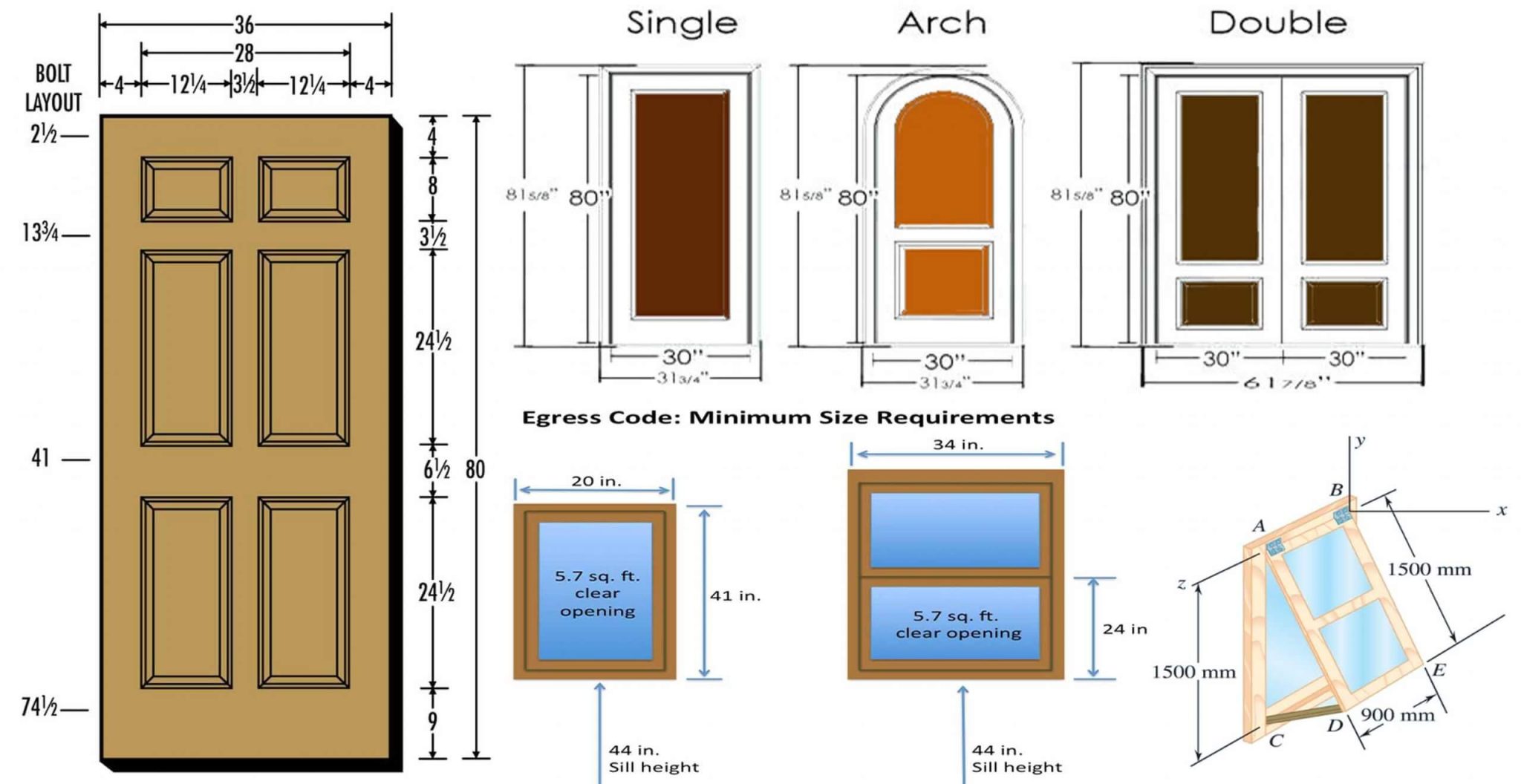Standard Bedroom Door Sizes in Canada: Standard Bedroom Door Size Canada

Understanding standard bedroom door sizes is crucial for various applications, including home renovation, furniture placement, and room design. Knowing the dimensions of standard doors allows for efficient planning and prevents potential issues during construction or redesign.
Common Canadian Bedroom Door Sizes, Standard bedroom door size canada
Standard bedroom door sizes in Canada typically range from 30 to 36 inches in width and 80 inches in height. The most common door types include:
| Door Type | Width | Height |
|---|---|---|
| Single Swing | 30 inches, 32 inches, 36 inches | 80 inches |
| Double Swing | 60 inches, 64 inches, 72 inches | 80 inches |
The Importance of Standard Door Sizes
Standard door sizes play a significant role in various aspects of home construction and design:
* Home Renovation: When planning a renovation, understanding standard door sizes ensures that new doors will fit seamlessly into existing openings, saving time and money.
* Furniture Placement: Knowing the standard width of a bedroom door allows for accurate furniture placement, ensuring that furniture can be easily moved in and out of the room.
* Room Design: Standard door sizes influence the overall flow and design of a room. Choosing doors that complement the room’s dimensions and style enhances the overall aesthetic appeal.
Building Codes and Regulations
Building codes and regulations in Canada play a vital role in determining standard door sizes. These codes ensure that doors meet specific safety and accessibility requirements. For example, building codes mandate that doors in bedrooms and other living spaces must have a minimum width of 32 inches to accommodate wheelchairs and other mobility devices. This ensures that all residents, regardless of their physical abilities, can easily access and use these spaces.
Factors Influencing Bedroom Door Size Selection

Choosing the right bedroom door size is crucial for both functionality and aesthetics. It impacts how the room feels, how easily furniture can be moved, and even the overall flow of traffic in your home.
Room Size and Traffic Flow
The size of your bedroom is a primary factor in determining the appropriate door size. A small bedroom might feel cramped with a large door, while a large bedroom might appear disproportionate with a small door. The door should create a balance between the room’s size and the overall design. Additionally, traffic flow plays a role. If your bedroom is frequently accessed, a wider door might be more convenient for moving furniture or multiple people through the doorway.
Furniture Placement
Consider the size and placement of your furniture when choosing a door size. A large bed, bulky dresser, or other furniture pieces might require a wider door to allow for easy movement and access. You don’t want to constantly bump into furniture when entering or exiting the room.
Door Swing Direction
The direction in which your door swings can also influence the required door size. A door swinging inward may need a larger clearance to avoid obstructing furniture or traffic flow. Conversely, a door swinging outward might require a wider opening to allow for a full swing.
Small Bedroom Door Size Considerations
For small bedrooms, it’s often best to opt for a standard-sized door, which is typically 30 inches wide. This allows for adequate passage while minimizing space consumption. However, if your bedroom is particularly narrow, a slightly narrower door might be more suitable. A door size of 28 inches might be sufficient, providing a comfortable passage while maximizing the usable space within the room.
Large Bedroom Door Size Considerations
Large bedrooms often benefit from wider doors. A 36-inch wide door can create a more spacious and welcoming feel, especially if the room has a lot of furniture or if it serves as a master suite. However, it’s essential to consider the overall design and layout of the room to ensure the door size complements the existing space.
Beyond Standard Sizes
While standard bedroom door sizes are common in Canada, situations arise where a custom-sized door might be necessary to accommodate unique architectural features, functional needs, or personal preferences. This section explores the availability, benefits, and considerations involved in choosing a custom bedroom door.
Custom Door Availability and Benefits
Custom-sized bedroom doors are readily available in Canada from various manufacturers and suppliers. They offer a range of benefits, including:
- Enhanced Aesthetics: Custom doors allow you to match the door size and style precisely to your room’s design, creating a seamless and aesthetically pleasing look.
- Improved Functionality: Custom doors can be tailored to accommodate specific needs, such as wider openings for wheelchair access or narrower doors for space optimization in smaller rooms.
- Unique Design Flexibility: Custom doors allow you to choose from a wider variety of materials, finishes, and hardware options, enabling you to create a truly unique and personalized look.
Considerations for Choosing Custom Door Sizes
Choosing a custom door size involves several considerations, including:
- Budget: Custom doors are generally more expensive than standard-sized doors due to the specialized manufacturing process and materials.
- Architectural Style: The architectural style of your home should be considered when choosing a custom door size. For instance, a traditional home might require a different door size than a modern one.
- Functional Needs: Consider the specific needs of the room and its occupants. For example, a bedroom for a wheelchair user might require a wider door opening than a standard bedroom.
Examples of Situations Where Custom Doors are Preferable
Custom doors are particularly beneficial in situations where standard sizes are inadequate, such as:
- Unique Room Shapes: Rooms with unusual shapes or angles might require custom-sized doors to fit properly and maintain the flow of the space.
- Access Requirements: For individuals with mobility limitations, custom doors with wider openings can significantly improve accessibility and ease of movement.
- Limited Space: In small rooms, custom doors with narrower openings can help optimize space utilization and create a more spacious feel.
